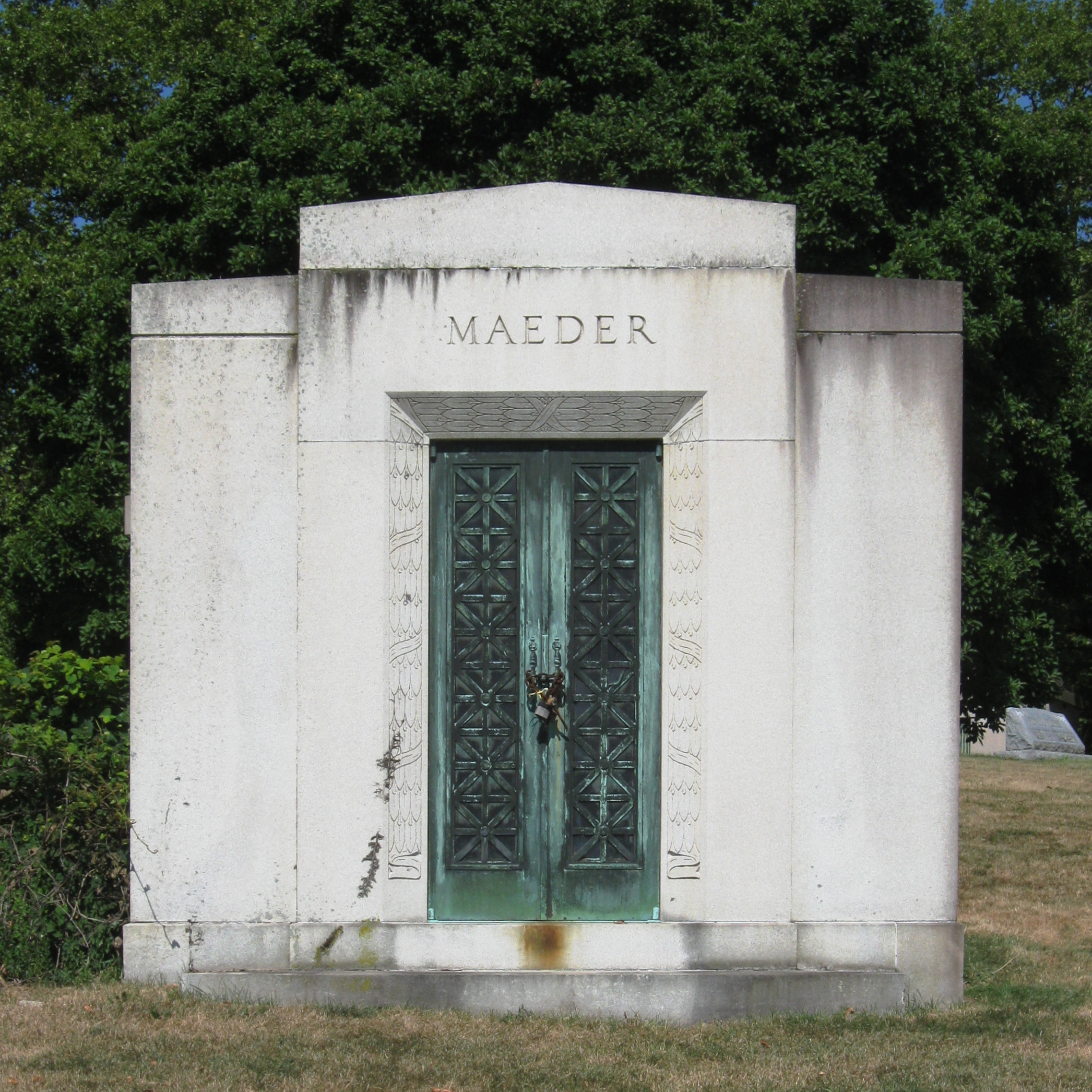
Simple modernist elegance enlivened by bronze doors and decorative etching around the doorframe.

Two identical obelisks side by side suggest that the families were related, or associated in some other way. The Berg obelisk probably dates from the late nineteenth century; perhaps 1886, when the cemetery opened, since the oldest Berg stone here is from 1876, which means that it would have been moved from the cemetery’s previous location in Troy Hill. The Etzel obelisk was probably put up at the same time, though Father Pitt was unable to find any individual Etzel stones as old as the obelisk obviously is. The style of these obelisks is restrained, with simple bases enlivened by classical foliage ornament.



A massive and ostentatious pile of classicism, with a curious florid R for the name Reinhold that ought to look out of place but actually harmonizes very well. It is pleasing to note that as late as 1987 the Reinholds had the money and the persistence to procure a stone matching the earlier ones in the plot.


Since Roman times, the inverted torch has been a symbol of death. Here are two examples from the Smithfield East End Cemetery, in both of which we note that the torch keeps burning upside-down in a most unlikely manner. Both couples have German names, both were probably members of the same Reformed congregation, and the stones are nearly contemporary and side by side; but we note that one of them is English and one is German—an indication of how thoroughly bilingual the more prosperous parts of the German community in Pittsburgh were at the beginning of the twentieth century.